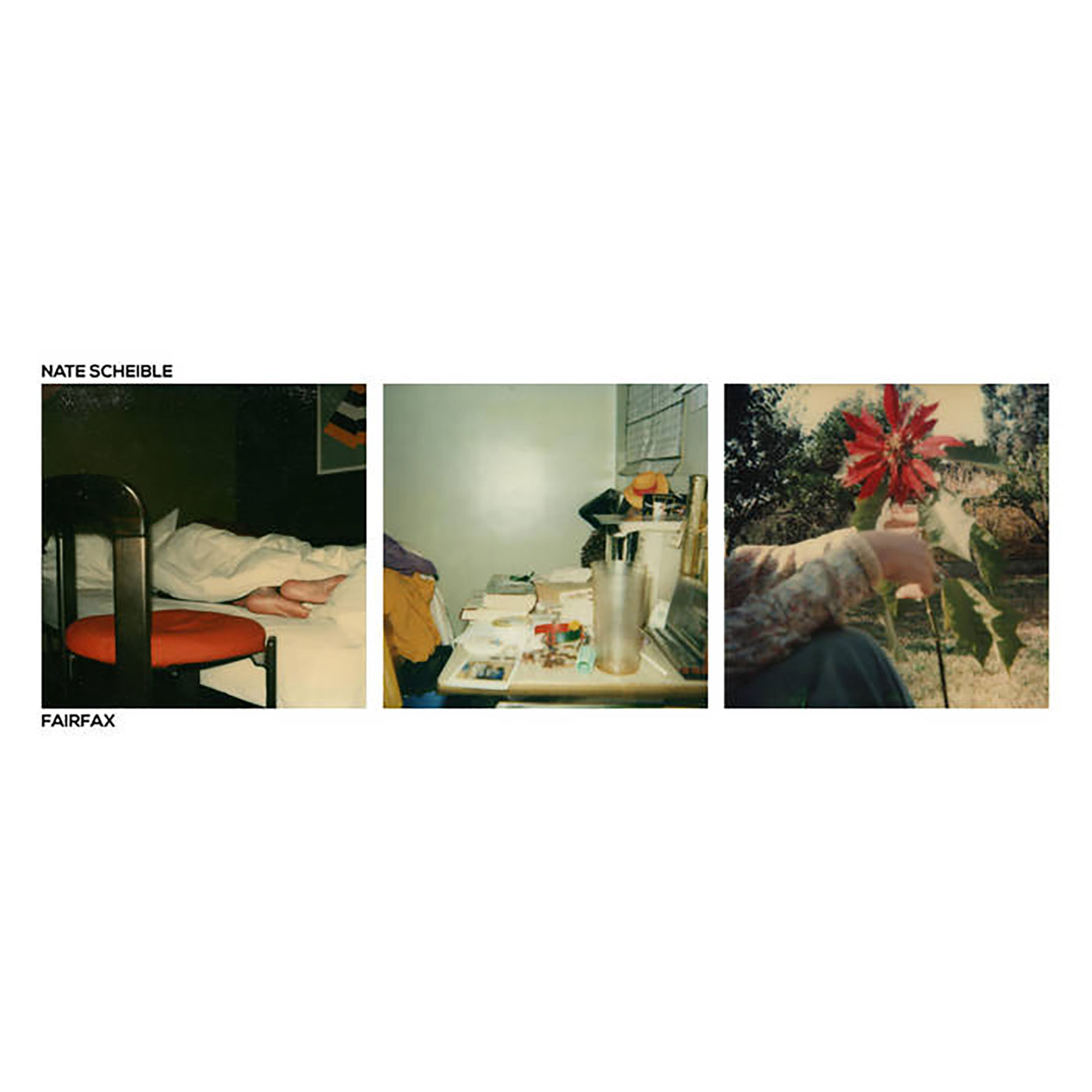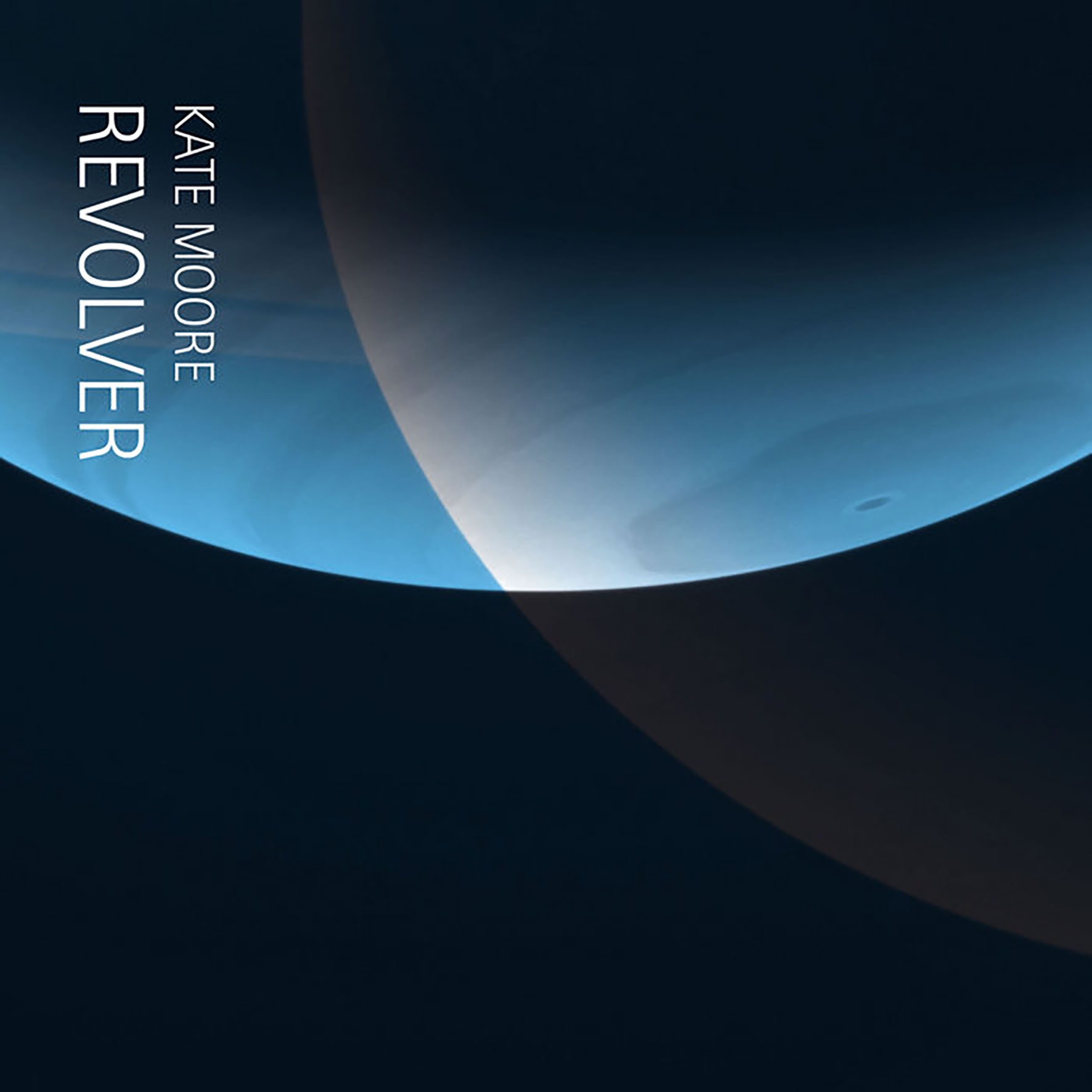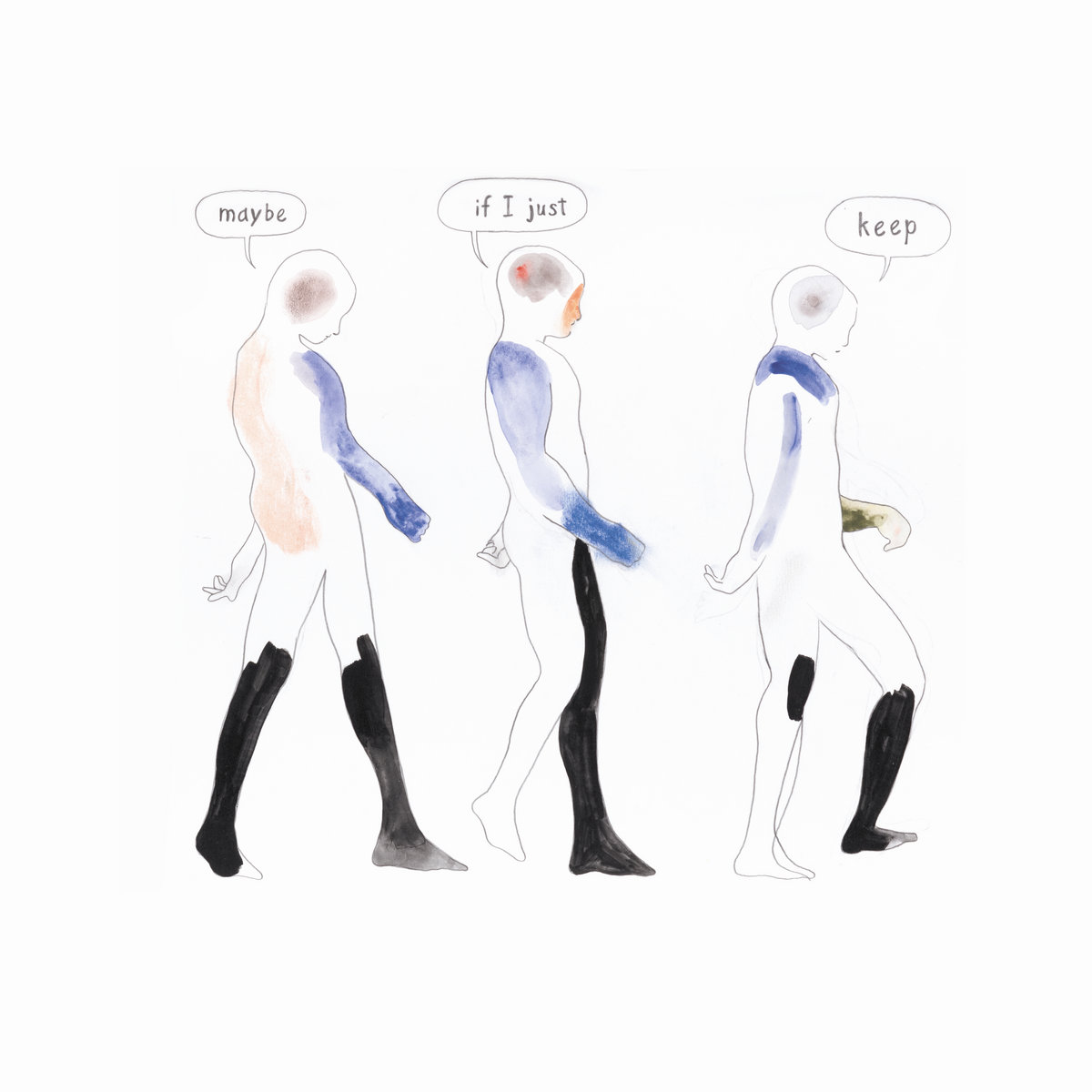 This latest album from the consistently fascinating Atkinson is yet another plunge into a vibrantly textured and otherworldly dreamspace, this time drawing inspiration from an abstract dialog between house and landscape. Or more specifically, "Inside and outside, different ways of orienting a body towards the world." In keeping with that theme, Atkinson "revisited twentieth-century women artists who variously chose, and were chosen by, their homes as a place to work." Naturally, there are some other conceptual layers as well (this being a Félicia Atkinson album, after all). One of the more interesting ones is the decision to give the album a name that resembles a "fake title of a fake Godard film." In an obvious sense, that is apt given how Image Langage feels like a film with no actual images, but Godard's mischievous meaning-dissolving weirdness is also manifested in how Atkinson wields and repurposes her sounds. In more concrete terms, that means that Atkinson deliberately used instruments alternately like field recordings or characters in a murky, surreal narrative and often reduces her voice to an unpredictably drifting and elusive presence. The overall effect is like being lost in a beautiful dream where an unreliable narrator periodically drifts in with riddle-like non-clues that only lead me deeper into Atkinson's eerie, soft-focus enigma.
This latest album from the consistently fascinating Atkinson is yet another plunge into a vibrantly textured and otherworldly dreamspace, this time drawing inspiration from an abstract dialog between house and landscape. Or more specifically, "Inside and outside, different ways of orienting a body towards the world." In keeping with that theme, Atkinson "revisited twentieth-century women artists who variously chose, and were chosen by, their homes as a place to work." Naturally, there are some other conceptual layers as well (this being a Félicia Atkinson album, after all). One of the more interesting ones is the decision to give the album a name that resembles a "fake title of a fake Godard film." In an obvious sense, that is apt given how Image Langage feels like a film with no actual images, but Godard's mischievous meaning-dissolving weirdness is also manifested in how Atkinson wields and repurposes her sounds. In more concrete terms, that means that Atkinson deliberately used instruments alternately like field recordings or characters in a murky, surreal narrative and often reduces her voice to an unpredictably drifting and elusive presence. The overall effect is like being lost in a beautiful dream where an unreliable narrator periodically drifts in with riddle-like non-clues that only lead me deeper into Atkinson's eerie, soft-focus enigma.
This album is billed as “an environmental record” about “getting lost in places imagined and real.” Naturally, one of the real places central to the album is Atkinson’s home on the “wild coast of Normandy” where much of the writing and recording took place (the rest occurred at a lakeside residency in Switzerland). I bring all this up because Image Langage has an unusually enigmatic and slippery aesthetic that blurs the line between songcraft and more abstract/outré fare. At times, the album can feel very “ambient,” but it is actually chasing something akin to impressionistic clairvoyance/clairaudience. While fully grasping the shades of meaning lurking within a Félicia Atkinson is often a tall order, Thea Ballard crafted quite an illuminating statement for the album’s description, noting that Image Langage evokes a visit to Atkinson’s seaside home in which we are “invited to witness Atkinson’s acts of seeing, hearing, and reading in a sonic double of the places they occurred.” In more practical terms, that means that the overall impression left by Image Langage is that of staying in a benignly haunted cottage populated by whispered voices, bleary drones, ephemeral flickers of piano melody, and hallucinatory manipulations of nature sounds. Unsurprisingly, I find that to be characteristically immersive and fascinating Atkinson territory, but Image Langage also has a handful of great individual pieces that transcend the baseline “ASMR-inspired ambient for well-read seaside ghosts” aesthetic. Amusingly, a case could be made that this is Atkinson’s “dub album,” as two of the strongest pieces share some common ground with artists like Pole and loscil.


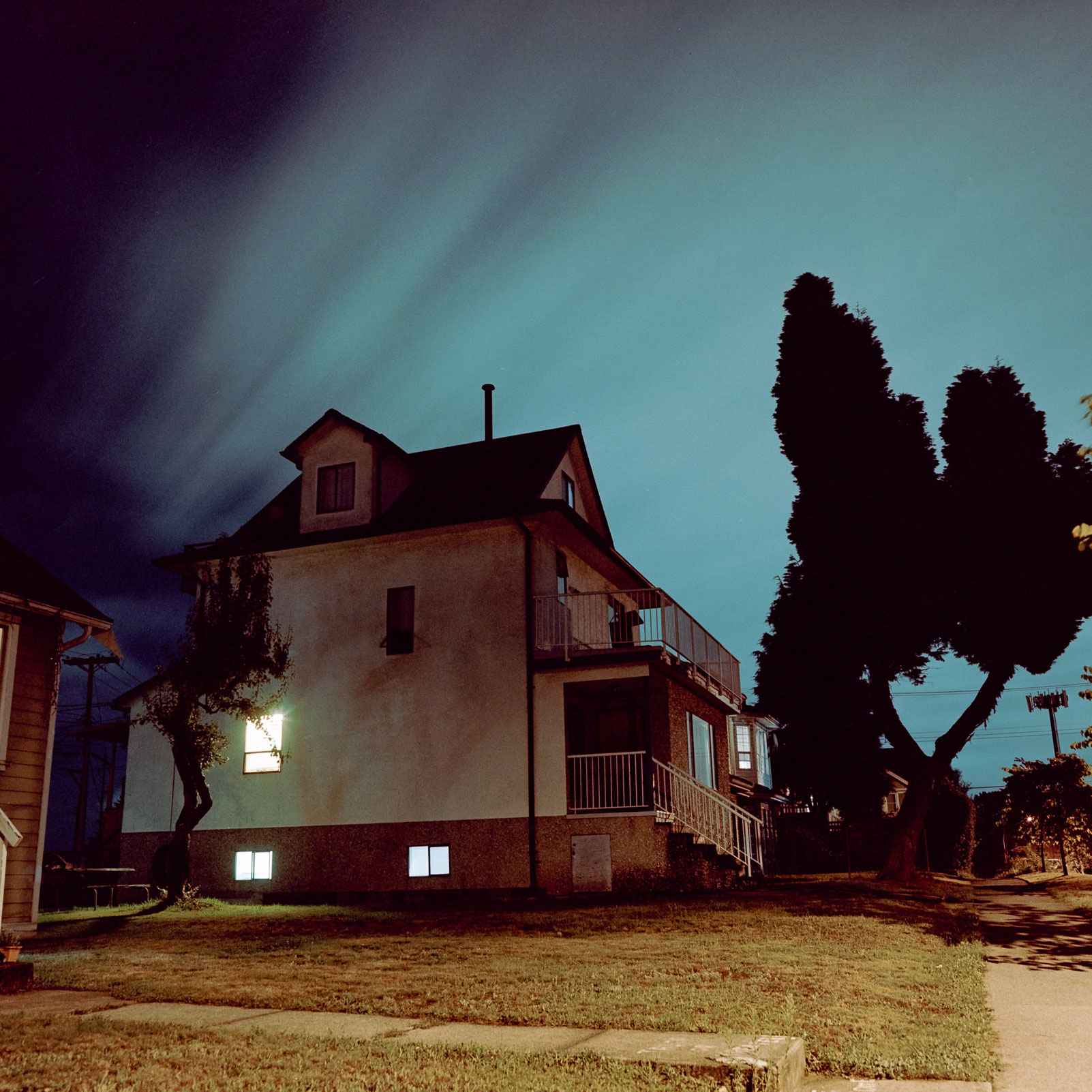
 After a handful of teasing and divergent singles, Caterina Barbieri's first full-length on her own light-years imprint is finally here. To be honest, I had some early apprehensions about how well Spirit Exit would stack up against previous releases, as this is an unusual Barbieri album for a couple of significant reasons. The most obvious one, of course, is that this is the first of the Milan-based synth visionary's albums to feature vocal pieces. Equally significant is how the album was composed and recorded, however, as Barbieri's previous releases gradually took shape from her eternally evolving live performances. Spirit Exit, on the other hand, is "100% studio music, written and recorded amidst Milan's infamous, dramatic extremely strict two-month lockdown...at the very start of the pandemic in early 2020." The drama and darkness of the period unquestionably surface a lot on these pieces, but the unraveling of civilization was but one of Barbieri's major influences at the time, as Spirit Exit was also inspired by "female philosophers, mystics and poets spread across time...united in their strength at cultivating vast internal worlds." Barbieri is no slouch at cultivating vast internal worlds herself, as evidenced by the "psycho-physical effects of pattern-based repetition" explored in her earlier work and the second half of the album features several pieces that feel like instant classics. Some of Barbieri's attempts to expand her vision into more pop and dance-inspired places work a bit less well to my ears, which ultimately gives Spirit Exit a bit of a "transitional album" feel, but those pieces may someday dazzle me after being further honed by live performances or inspired collaborations (she previously managed to floor me once with Fantas and again with Fantas Variations, after all).
After a handful of teasing and divergent singles, Caterina Barbieri's first full-length on her own light-years imprint is finally here. To be honest, I had some early apprehensions about how well Spirit Exit would stack up against previous releases, as this is an unusual Barbieri album for a couple of significant reasons. The most obvious one, of course, is that this is the first of the Milan-based synth visionary's albums to feature vocal pieces. Equally significant is how the album was composed and recorded, however, as Barbieri's previous releases gradually took shape from her eternally evolving live performances. Spirit Exit, on the other hand, is "100% studio music, written and recorded amidst Milan's infamous, dramatic extremely strict two-month lockdown...at the very start of the pandemic in early 2020." The drama and darkness of the period unquestionably surface a lot on these pieces, but the unraveling of civilization was but one of Barbieri's major influences at the time, as Spirit Exit was also inspired by "female philosophers, mystics and poets spread across time...united in their strength at cultivating vast internal worlds." Barbieri is no slouch at cultivating vast internal worlds herself, as evidenced by the "psycho-physical effects of pattern-based repetition" explored in her earlier work and the second half of the album features several pieces that feel like instant classics. Some of Barbieri's attempts to expand her vision into more pop and dance-inspired places work a bit less well to my ears, which ultimately gives Spirit Exit a bit of a "transitional album" feel, but those pieces may someday dazzle me after being further honed by live performances or inspired collaborations (she previously managed to floor me once with Fantas and again with Fantas Variations, after all). John McGuire has an impressive background in the study and evolution of electronic music: not least his time with Stockhausen at Darmstadt summer schools and subsequent commissions for German radio. Pulse Music is a unique and lively collection (1975-79) that skates across similar post-minimalist terrain as Reich and Riley and kills any lingering debate about the merits of serialism. McGuire created pulse layers in the studios of WDR and the University of Cologne, which to this day possess astounding clarity and separation, allied to marvelous tempo changes.
John McGuire has an impressive background in the study and evolution of electronic music: not least his time with Stockhausen at Darmstadt summer schools and subsequent commissions for German radio. Pulse Music is a unique and lively collection (1975-79) that skates across similar post-minimalist terrain as Reich and Riley and kills any lingering debate about the merits of serialism. McGuire created pulse layers in the studios of WDR and the University of Cologne, which to this day possess astounding clarity and separation, allied to marvelous tempo changes. This long-awaited follow up to Malone's 2019 cult masterpiece The Sacrificial Code is an unexpected blend of the familiar and the unfamiliar, as the Stockholm-based composer trades in her now signature pipe organ for "a complex electroacoustic ensemble." While that new approach certainly features an ambitiously expanded instrumental palette (trombone, bass clarinet, boîte à bourdon. sinewave generator, and ARP 2500 synth), Living Torch is still instantly recognizable as Malone's work both stylistically and structurally. Notably, the piece was "commissioned by GRM for its legendary loudspeaker orchestra," which makes a lot of sense in hindsight, as Living Torch sometimes improbably feels like the work of a drone-obsessed medieval organist who somehow managed to get ahold of Sunn O)))'s gear and some ancient battle horns. Given those enhancements, Living Torch can reasonably be described as a more conspicuously doom-inspired release than The Sacrificial Code. Admittedly, that takes this particular album a bit out of my own personal comfort zone, but I love it anyway and remain firm in my belief that Malone is one of the most singular and fascinating composers of her generation.
This long-awaited follow up to Malone's 2019 cult masterpiece The Sacrificial Code is an unexpected blend of the familiar and the unfamiliar, as the Stockholm-based composer trades in her now signature pipe organ for "a complex electroacoustic ensemble." While that new approach certainly features an ambitiously expanded instrumental palette (trombone, bass clarinet, boîte à bourdon. sinewave generator, and ARP 2500 synth), Living Torch is still instantly recognizable as Malone's work both stylistically and structurally. Notably, the piece was "commissioned by GRM for its legendary loudspeaker orchestra," which makes a lot of sense in hindsight, as Living Torch sometimes improbably feels like the work of a drone-obsessed medieval organist who somehow managed to get ahold of Sunn O)))'s gear and some ancient battle horns. Given those enhancements, Living Torch can reasonably be described as a more conspicuously doom-inspired release than The Sacrificial Code. Admittedly, that takes this particular album a bit out of my own personal comfort zone, but I love it anyway and remain firm in my belief that Malone is one of the most singular and fascinating composers of her generation. On this latest full-length, the perennially eclectic and boldly adventurous duo of Drew Daniel and MC Schmidt take a break from mining weird and esoteric source material to focus their energies on paying homage to underheard Polish composer and Krzysztof Penderecki associate Bogusław Schaeffer. Matmos were given full access to work their mindbending magic on Schaeffer's complete recorded works and the resultant album is as characteristically unpredictable and hard-to-categorize as ever: instead of remixing or reinterpreting the Polish composer's work, Matmos instead took "tissue samples of DNA from past compositions" and "mutated them into entirely new organisms that throb with an alien vitality." Put another way, Regards/Ukłony dla Bogusław Schaeffer attempts to create a conversation or bridge between the "utopian 1960s Polish avant-garde" and "the contemporary dystopian cultural moment." That is certainly intriguing and fertile terrain for a Matmos album, but the resultant songs wound up somewhere even more delightful and confounding than usual, often approximating a collision between fragmented exotica, kosmische, and a Kubrickian sci-fi nightmare. Naturally, that will be very appealing territory for most long-time Matmos fans, as this album is an especially inspired "everything and the kitchen sink" tour de force of quite disparate stylistic threads woven together in playfully disorienting and mischievous fashion by an talented international cast of virtuousos, eccentric visionaries, and plunderphonic magpies.
On this latest full-length, the perennially eclectic and boldly adventurous duo of Drew Daniel and MC Schmidt take a break from mining weird and esoteric source material to focus their energies on paying homage to underheard Polish composer and Krzysztof Penderecki associate Bogusław Schaeffer. Matmos were given full access to work their mindbending magic on Schaeffer's complete recorded works and the resultant album is as characteristically unpredictable and hard-to-categorize as ever: instead of remixing or reinterpreting the Polish composer's work, Matmos instead took "tissue samples of DNA from past compositions" and "mutated them into entirely new organisms that throb with an alien vitality." Put another way, Regards/Ukłony dla Bogusław Schaeffer attempts to create a conversation or bridge between the "utopian 1960s Polish avant-garde" and "the contemporary dystopian cultural moment." That is certainly intriguing and fertile terrain for a Matmos album, but the resultant songs wound up somewhere even more delightful and confounding than usual, often approximating a collision between fragmented exotica, kosmische, and a Kubrickian sci-fi nightmare. Naturally, that will be very appealing territory for most long-time Matmos fans, as this album is an especially inspired "everything and the kitchen sink" tour de force of quite disparate stylistic threads woven together in playfully disorienting and mischievous fashion by an talented international cast of virtuousos, eccentric visionaries, and plunderphonic magpies.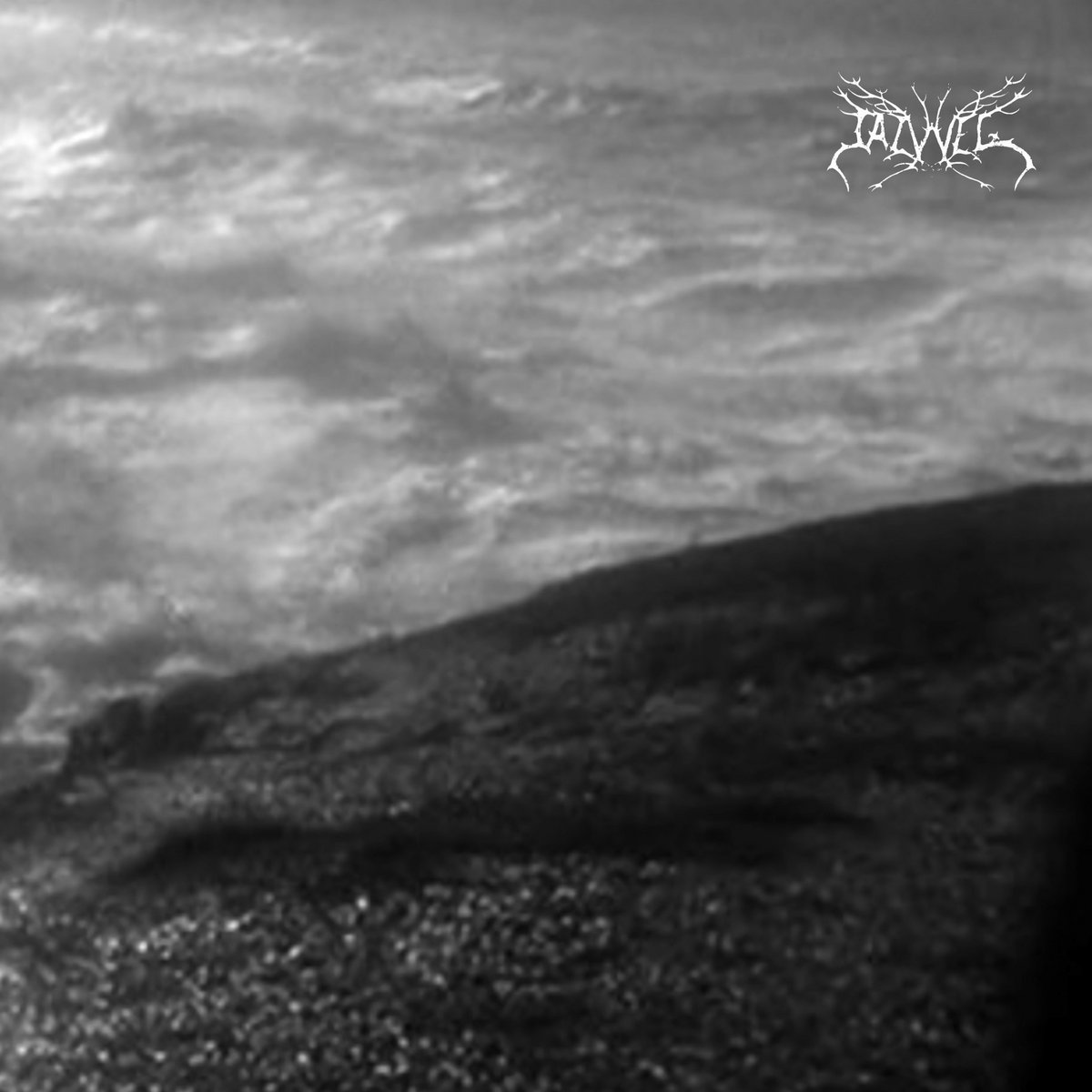 This is my first deep immersion into Joëlle Vinciarelli & Eric Lombaert's deeply unconventional "free metal" duo, but I have long been a fan of the pair's noise/drone band La Morte Young (as well as Vinciarelli's repeat collaborations with My Cat is an Alien). Notably, there is absolutely nothing recognizably "metal" about this latest release, as the closest kindred spirits are probably outer limits psychonauts like the LAFMS milieu or Borbetomagus. However, even those signposts are inadequate at conveying how far Talweg have descended into their own personal rabbit hole with this album, as these four pieces feel both unstuck in time and decidedly pagan/occult-inspired (which makes sense, given Vinciarelli's passion for collecting unusual and ancient instruments). Further muddying the waters, this album arguably captures the duo in "soundtrack mode," as two of the pieces are early/rehearsal versions of pieces composed for a Monster Chetwynd exhibition, while a third borrows a nursery rhyme from Marcel Hanoun's "Le Printemps" as its central theme. While "rehearsals for an exhibition soundtrack" admittedly does not sound all that appealing on paper, these recordings are quite compelling in reality, as Des tourments si grands often feels like a remarkably inspired and deeply unconventional stab at outsider free jazz. Fans of Vinciarelli's work with MCIAA will definitely want to investigate this one, as it journeys into similarly alien territory, but the addition of Lombaert's killer drumming takes that aesthetic in a far more explosive and visceral direction.
This is my first deep immersion into Joëlle Vinciarelli & Eric Lombaert's deeply unconventional "free metal" duo, but I have long been a fan of the pair's noise/drone band La Morte Young (as well as Vinciarelli's repeat collaborations with My Cat is an Alien). Notably, there is absolutely nothing recognizably "metal" about this latest release, as the closest kindred spirits are probably outer limits psychonauts like the LAFMS milieu or Borbetomagus. However, even those signposts are inadequate at conveying how far Talweg have descended into their own personal rabbit hole with this album, as these four pieces feel both unstuck in time and decidedly pagan/occult-inspired (which makes sense, given Vinciarelli's passion for collecting unusual and ancient instruments). Further muddying the waters, this album arguably captures the duo in "soundtrack mode," as two of the pieces are early/rehearsal versions of pieces composed for a Monster Chetwynd exhibition, while a third borrows a nursery rhyme from Marcel Hanoun's "Le Printemps" as its central theme. While "rehearsals for an exhibition soundtrack" admittedly does not sound all that appealing on paper, these recordings are quite compelling in reality, as Des tourments si grands often feels like a remarkably inspired and deeply unconventional stab at outsider free jazz. Fans of Vinciarelli's work with MCIAA will definitely want to investigate this one, as it journeys into similarly alien territory, but the addition of Lombaert's killer drumming takes that aesthetic in a far more explosive and visceral direction. Every now and then, I stumble upon a singular artist whose work has somehow managed to remain largely undocumented and entirely under the radar all but the most devout underground music fans. Aaron Taylor Kuffner is the latest visionary to fall into this category, as his Zemi17 project has been around for a quarter century now and he has only just gotten around to releasing his full-length debut. Notably, Gamelatron Bidadari is quite a departure from Zemi17's previous two EPs on The Bunker's house label, as Impressions (2014) and Zipper (2016) were an attempt to integrate Taylor Kuffner's techno past with more natural and timeless sounds originating from his time spent studying gamelan in Indonesia. On this latest release, all traces of Zemi17's dancefloor past have disappeared to showcase another side of Taylor Kuffner's unique artistry: the Gamelatron project that he co-created in 2008, which is billed as "the world’s first fully robotic gamelan orchestra." Since the project's inception, Taylor Kuffner has built more than 70 site-specific kinetic sculptures and provided his signature "immersive, visceral experience" to more than a million people across the globe. The Gamelatron Bidadari captured here is but one of those sculptures and originally debuted as part of an exhibit entitled "No Spectators: The Art of Burning Man" at The Smithsonian's Renwick gallery. While a lot of site-specific installations understandably do not translate terribly well to home listening, this one is a delightful exception, as the resultant recordings feel like an ingenious twist on a timeless favorite, taking traditional gamelan music into an even more loopingly hypnotic direction than usual.
Every now and then, I stumble upon a singular artist whose work has somehow managed to remain largely undocumented and entirely under the radar all but the most devout underground music fans. Aaron Taylor Kuffner is the latest visionary to fall into this category, as his Zemi17 project has been around for a quarter century now and he has only just gotten around to releasing his full-length debut. Notably, Gamelatron Bidadari is quite a departure from Zemi17's previous two EPs on The Bunker's house label, as Impressions (2014) and Zipper (2016) were an attempt to integrate Taylor Kuffner's techno past with more natural and timeless sounds originating from his time spent studying gamelan in Indonesia. On this latest release, all traces of Zemi17's dancefloor past have disappeared to showcase another side of Taylor Kuffner's unique artistry: the Gamelatron project that he co-created in 2008, which is billed as "the world’s first fully robotic gamelan orchestra." Since the project's inception, Taylor Kuffner has built more than 70 site-specific kinetic sculptures and provided his signature "immersive, visceral experience" to more than a million people across the globe. The Gamelatron Bidadari captured here is but one of those sculptures and originally debuted as part of an exhibit entitled "No Spectators: The Art of Burning Man" at The Smithsonian's Renwick gallery. While a lot of site-specific installations understandably do not translate terribly well to home listening, this one is a delightful exception, as the resultant recordings feel like an ingenious twist on a timeless favorite, taking traditional gamelan music into an even more loopingly hypnotic direction than usual. Originally a musical radio play, these twelve tracks excavate and spotlight the life and work of original Beat poet Bob Kaufman; and with Kaufman the life and the work are genuinely inseparable. A mentor to Kerouac, and dubbed the Black American Rimbaud, Kaufman endured savage SFPD brutality, electroshock treatment, and incarceration, before his young and obscure death in abject poverty. Kaufman had purposefully stilled his own voice with a vow of silence stretching from the JFK assassination until the end of the Vietnam War, yet here it still resounds with the speed and spirit of surrealist jazz, forever “lost in a dream world, where time is told with a beat.”
Originally a musical radio play, these twelve tracks excavate and spotlight the life and work of original Beat poet Bob Kaufman; and with Kaufman the life and the work are genuinely inseparable. A mentor to Kerouac, and dubbed the Black American Rimbaud, Kaufman endured savage SFPD brutality, electroshock treatment, and incarceration, before his young and obscure death in abject poverty. Kaufman had purposefully stilled his own voice with a vow of silence stretching from the JFK assassination until the end of the Vietnam War, yet here it still resounds with the speed and spirit of surrealist jazz, forever “lost in a dream world, where time is told with a beat.”